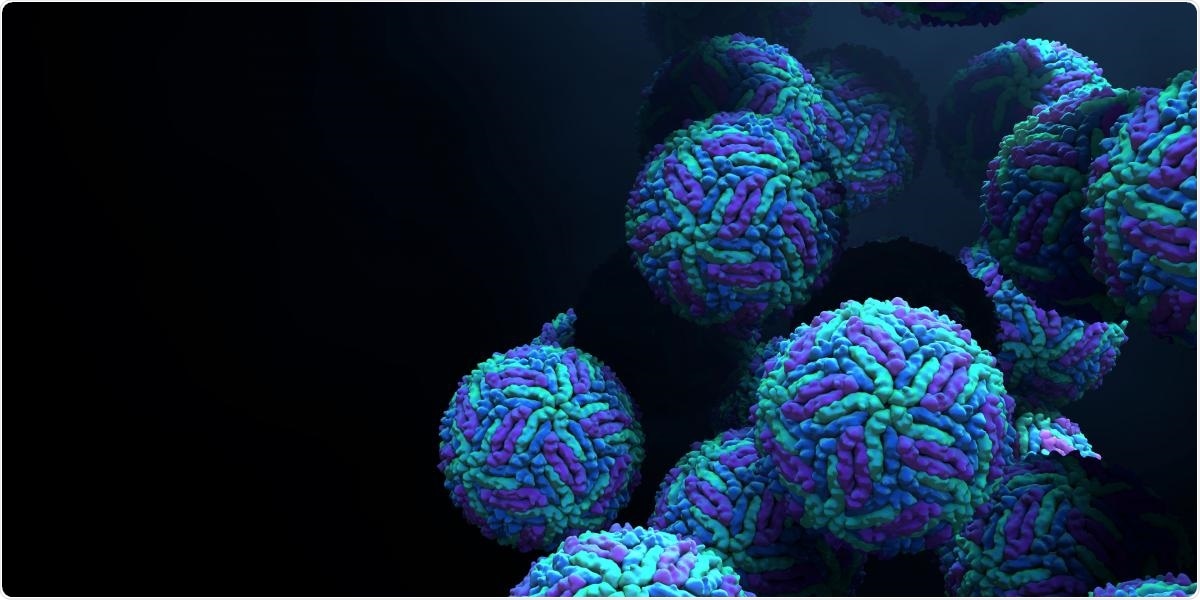The level at which viruses can pick up genes from their hosts to hone their infection process, while hosts also co-opt beneficial viral genes simultaneously, is illustrated by the first comprehensive analysis of viral horizontal gene transfer (HGT).

New research shows gene exchange between viruses and hosts drives evolution. Image Credit: The University of British Columbia.
The movement of genetic material among disparate groups of organisms, instead of “vertical” transmission of DNA between parent and offspring, is known as HGT. Earlier studies have noticed HGT between bacteria and their viruses.
The studies have shown that the HGT plays a key role in the gene movement between bacterial species. However, the new research, published in Nature Microbiology, studies the interactions between viruses and eukaryotes, comprising plants, animals, protists, fungi, and most algae.
We knew from individual examples that viral genes have played a role in the evolution of eukaryotes. Even humans have viral genes, which are important for our development and brain function. We wanted to understand more broadly how HGT has affected viruses and eukaryotes from across the tree of life.”
Dr Nicholas Irwin, Study Lead Author and Junior Research Fellow, Merton College, University of Oxford
Dr Nicholas Irwin is a former PhD student at the University of British Columbia (UBC).
To handle this problem, the scientists analyzed viral-eukaryotic gene transfer occurring in the genomes of thousands of viruses and hundreds of eukaryotic species. They found several genes that had been transferred and discovered that HGT from eukaryotes to viruses was double as frequent as that of the reverse direction.
We were interested to find that certain groups of viruses, especially those that infect single-celled eukaryotes, acquire a lot of genes from their hosts. By studying the function of these genes we were able to make predictions about how these viruses affect their hosts during infection.”
Dr Patrick Keeling, Study Senior Author and Professor, Department of Botany, The University of British Columbia
Unlike viruses, eukaryotic species retained fewer viral genes, even though the ones that were retained to be shown have had an important effect on host biology over time in evolution.
Many of these viral-derived genes appear to have repeatedly affected the structure and form of different organisms, from the cell walls of algae to the tissues of animals. This suggests that host-virus interactions may have played an important role in driving the diversity of life we see today.”
Dr Nicholas Irwin, Study Lead Author and Junior Research Fellow, Merton College, University of Oxford
“These transfers not only have evolutionary consequences for both virus and host but could have important health implications,” Dr Keeling added.
HGT permits genes to hop between species that include viruses and their corresponding hosts. If the gene does something productive, it can sweep across the population and become a species feature, which results in the fast emergence of new capabilities, contrary to the increased incremental transformations that are achieved as a result of smaller mutations.
Even though viruses like Zika and coronaviruses do not participate in the transfer of genes, they often influence similar genes present in their hosts via complex mechanisms. Future studies into these transferred genes may, thus, offer a new approach for comprehending the infection processes of these and other viruses—which can be vital for drug discovery.
“The past two years have clearly demonstrated the destructive potential of viruses, but we think that this work serves as an interesting reminder that viruses have also contributed to the evolution of life on Earth,” concluded Dr Irwin.
Source:
Journal reference:
Irwin, N., et al., (2021) Systematic evaluation of horizontal gene transfer between eukaryotes and viruses. Nature Microbiology. doi.org/10.1038/s41564-021-01026-3.